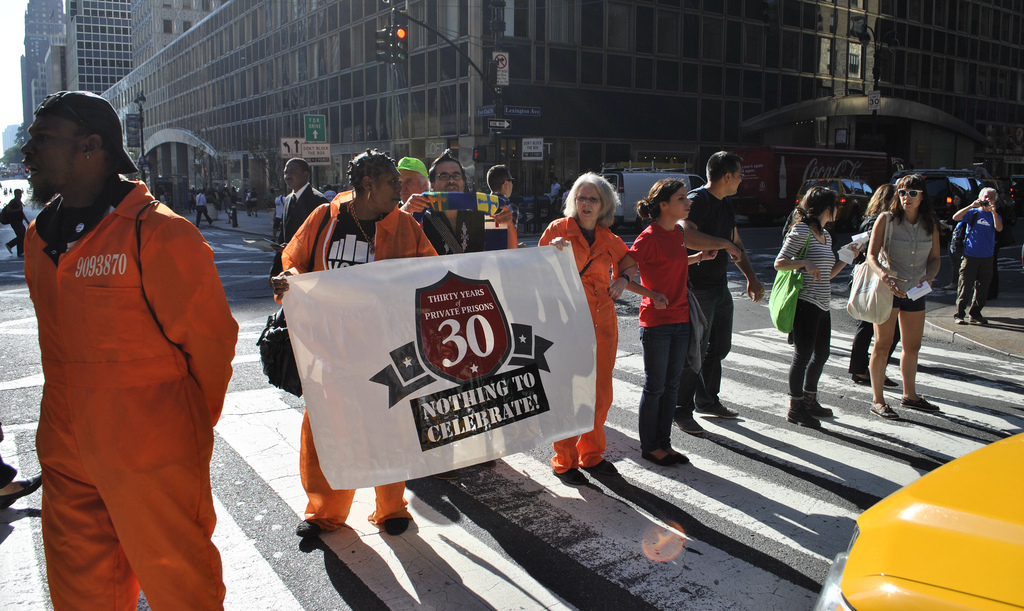Views expressed in opinion columns are the author’s own.
On Monday, I was in a criminal courtroom at the Prince George’s County District Court for a journalism assignment Monday. In front of me stood a balding man in a casual black top. He was the defendant, in court because he had stolen an Amazon package from a neighbor’s porch.
What I thought would be a simple trial for a simple misdemeanor turned out to be a small but intriguing look into the prison system’s treatment of mentally ill convicts. Berlin Ruleman, the defendant, already had a long list of criminal offenses — 17, to be exact. Most had been committed within the last two decades. The judge was familiar with him, even asking Ruleman if he was still going to Mental Health Court. He ultimately decided not to give Ruleman jail time, noting “his mental health would deteriorate” further.
Most of the time, when I think of people locked up in prison, I think of the loud and boisterous inmates from the show Beyond Scared Straight. I don’t often think about whether they have any mental illnesses while incarcerated, but the reality is shocking.
The Treatment Advocacy Center, a nonprofit advocate group for individuals with mental health issues, estimated that nearly 400,000 American inmates had a mental illness in 2016. Sheriff Mark Wasylyshyn from Wood County, Ohio, noted the severity of mental illness in the prison system, saying, “If you took drugs and alcohol and mental illness out of my jail, my jail would be empty.”
Policy research group Urban Institute found that individuals with mental illnesses not only remain in jail longer than others but also return to jail more frequently and cost more to incarcerate, according to The Pew Charitable Trusts.
Prisons are already uncomfortable enough for those without mental illness; those with these conditions are even worse off. Prisons can be loud and dangerous environments, agitating existing symptoms and preventing recovery.
Moreover, as HuffPost’s Dustin DeMoss explained, solitary confinement is “the method of choice in U.S. prisons for anyone demonstrating perceived or misunderstood mental illness.” This is exactly what it sounds like — inmates are locked up in tiny cells isolated from others for hours at a time. Psychiatrist Stuart Grassian found that almost a third of inmates in solitary confinement were “actively psychotic and/or acutely suicidal.”
Any condition the mentally ill may have will only be exacerbated in the extreme circumstances prisons impose, such as solitary confinement.
To combat this vicious cycle, more and more states need to implement mental health courts as the first step to prison reform for the mentally ill. According to the state of Maryland’s Mental Health Court website, the court system employs a specialized “problem-solving approach” specifically for the mentally ill, offering an alternative to “traditional adversarial criminal court processing.” Those who choose to participate must be screened and participate in a treatment plan throughout the process.
Although a study done by the Urban Institute found mental health courts reduce the likelihood for those who leave prison to come back, they found it unclear whether the courts positively impacted the participants’ mental health. That is why mental health courts are only the first step.
Larger administrative steps within actual prisons must be put into effect to ensure the mentally ill receive humane treatment. American prisons need to look at prison models established in Scandinavian countries, such as Sweden, which boasts rehabilitative practices that ensure inmates can transition well into society when they are discharged. It’s easy to think of inmates as subhuman. They are isolated from society and not much is known about their treatments or the conditions inside the prison system. This does not eliminate the pressing need to focus on rehabilitation to accomplish sustainable and humane prison reform.
Maris Medina is a sophomore journalism major. She can be reached at marismedina29@gmail.com.



